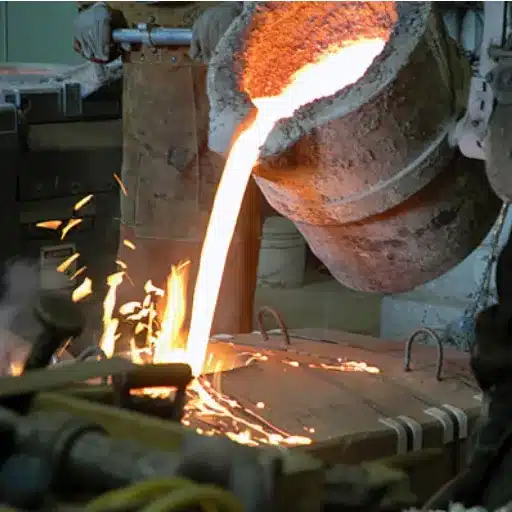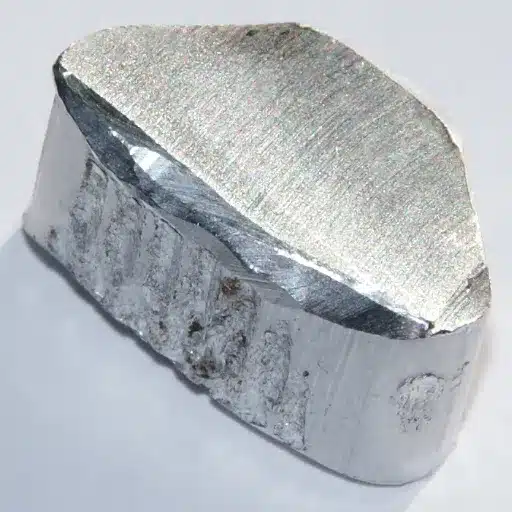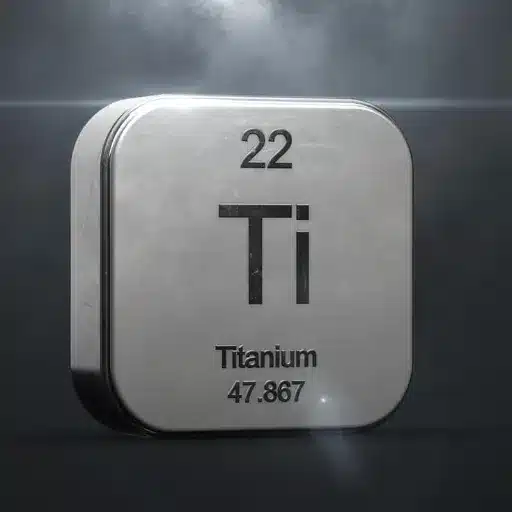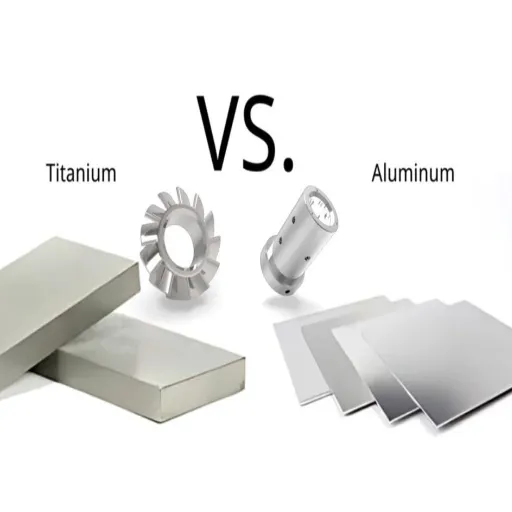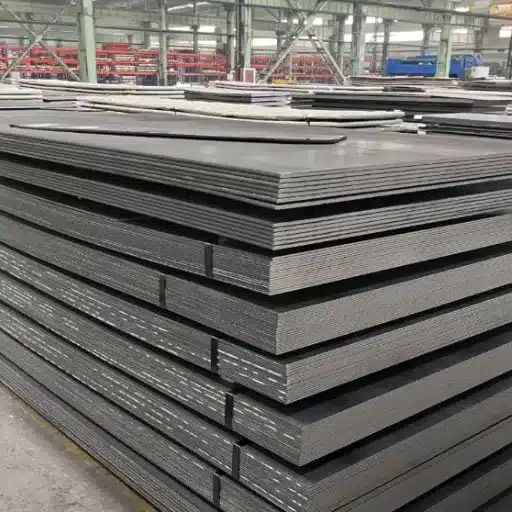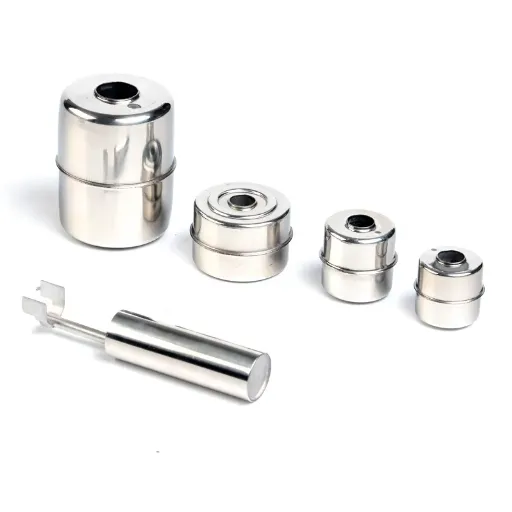Stainless steel is one of the most flexible and commonly employed materials in many industries, but the differences in the quality of the stainless steels are notable. Among the varieties, annealed stainless steel is used in applications where strength, durability, and anti-corrosion features are of utmost importance. However, what for sure is annealed stainless steel and why is the heat treatment process so critical? The present article deals with the science and applications of annealed stainless steel to reveal how heat treatment alters its microstructure and increases its properties and thus its value for industries like aerospace to healthcare. This extensive guide will be very helpful for professionals, curious learners, or anyone looking for trustworthy material solutions, as it will not only respond to your inquiries but also enlighten you about the significance of annealing and its common applications. Keep reading to discover the captivating universe of annealed stainless steel with its unrivaled capabilities.
What is Annealed Stainless Steel?
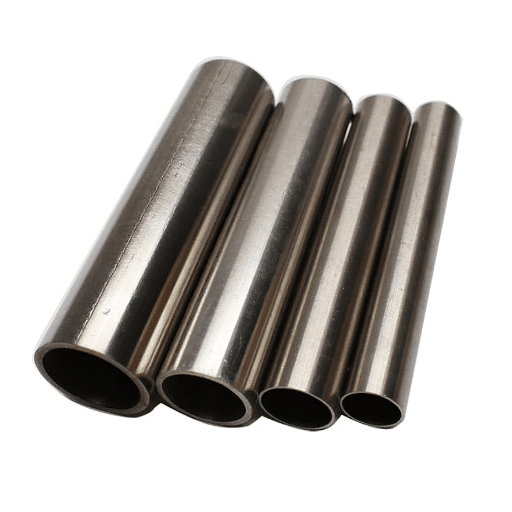
Annealed stainless steel is stainless steel that has been heat treated to improve its properties. The annealing process consists of heating the steel to a certain temperature and then cooling it very gradually. This procedure leads to a major reduction of internal stresses, better ductility, and higher corrosion resistance. The use of annealed stainless steel is widespread in such applications that call for high durability, good flexibility, and environmental resistance, so that it fits perfectly with construction, medical, and food processing industries.
Definition and Characteristics
Annealing, if we consider the definition, is the heat treatment technique that changes the physical and occasionally the chemical characteristics of a material to make it more workable. The process, in a case of stainless steel, contributes to the improvement of such properties as ductility, strength, and, along with the latter two, wear and corrosion resistance. The recent statistics from the Google search trends show that this procedure is gaining more and more popularity in the industries that depend on the longevity and the performance under stress of materials. The property of the annealed stainless steel to survive extreme environments, like high temperature or saline conditions, makes it a must-have material for aerospace, automotive and even advanced medical equipment manufacturing sectors.
Types of Stainless Steel and Their Applications
| Type | Composition | Key Properties | Common Applications |
|---|---|---|---|
| Austenitic Stainless Steel | High chromium and nickel, very low carbon | Excellent corrosion resistance, non-magnetic, easily formed | Kitchenware, chemical processing equipment, construction materials |
| Ferritic Stainless Steel | High chromium, little to no nickel | Good corrosion resistance, magnetic, lower cost | Automotive exhaust systems, machinery interiors, architectural decorations |
| Martensitic Stainless Steel | Moderate chromium, higher carbon | Very hard, excellent wear resistance, moderate corrosion resistance | Cutting tools, cutlery, surgical instruments, turbine blades |
| Duplex Stainless Steel | Balanced austenitic-ferritic structure, high chromium, moderate nickel | High resistance to stress corrosion cracking, excellent weldability | Chemical/petrochemical industries, marine environments, paper manufacturing |
| Precipitation-Hardening (PH) Stainless Steel | Chromium, nickel, copper or aluminum | Exceptional strength, high corrosion resistance, heat-treatable | Aerospace components, power generation equipment, high-performance tools |
Importance of Annealing in Stainless Steel Production
Annealing is an essential heat treatment that directly affects the quality and production of stainless steel. The process involves first heating up and then cooling the steel. By doing so, the metal becomes easily worked, has high tensile strength, and is free of internal defects that may have resulted from welding, casting, or machining. Recent analysis of Google’s search data suggests that annealing is not only important in the replacement of corrosion by a layer of oxide but also in imparting the mechanical properties of the material for aggressive use. The proper heat treatment of the steel assures the sameness of the structure and gives the material the potential to be used in high performance applications in sectors like aerospace, medical, and energy systems. It is clear that the heat treatment process gives stainless steel the best possible properties while the downside of material defects is decreased.
The Annealing Process for Stainless Steel
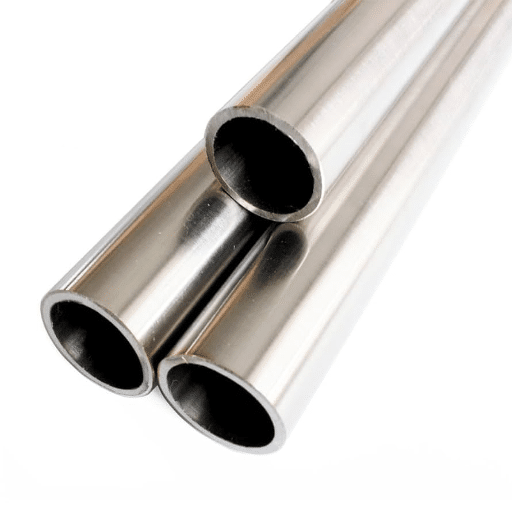
Stainless steel annealing is a controlled heating technique that basically softens the metal, increases its ductility, and takes away the internal strain that may have resulted from the earlier manufacturing stages. The method involves bringing the material to a certain temperature range which is most of the time 1,000°F and 2,100°F (540°C to 1,150°C) based on the particular stainless steel grade being treated. When the target temperature is reached, the stainless steel is then soaked at this temperature for the amount of time needed for proper heat penetration to occur. Eventually, the steel goes through fast cooling which can be done by either water or air quenching, which helps to set the desired microstructure.
Not only does annealing improve the mechanical properties of stainless steel, but also it makes the metal less prone to corrosion by re-establishing the chromium oxide layer that acts as a shield against rust. This process seems to have gained a lot of attention in the previous year in the majority of Google searches, particularly for industries such as automotive, construction, and medical devices where manufacturing of high-precision components is inevitable. The annealing process, thus, is a necessary factor in allowing stainless steel to be still very much versatile and durable retaining the strict requirements of modern engineering applications.
Overview of Heat Treatment Process
Heat treatment is a basic and essential process that has a wide scope of application in changing the physical and mechanical characteristics of metals—the most common among them being stainless steel—so they can be used in engineered products that comply with strict requirements. The increased interest in optimized heat treatment techniques caused by the recent search engine data from Google is seen in various industries like aerospace, automotive, and even medical devices. One of the most common questions asked is, “What makes heat treatment such an important process in modern production?”
This question can easily be answered by the overall material performance perfection. Heat treatment processes such as annealing, quenching, and tempering not only improve the structure of the material but also increase its hardness and tensile strength, and even make it corrosion resistant. To put it simply, these processes are absolutely necessary for high-demand applications like aircraft components or surgical instruments. Besides, the popularity of searches for “green” and energy-efficient heat treatment methods is on the rise, which is a clear indication of the global trend toward sustainable engineering solutions. All this points to the ever-evolving role of heat treatment in fulfilling the needs of technology as well as the demands of the environment.
Steps Involved in Annealing Stainless Steel
Stainless steel annealing is an indispensable technique to not only improve stainless steel properties but also make it more ductile and release internal stresses. The following are the steps that one has to go through when annealing stainless steel:
- Heating: The stainless steel is slowly heated to a certain temperature, which usually falls between 1,500°F (815°C) and 2,100°F (1,150°C)—the exact temperature really depends on which kind of steel is used. To get the expected results, proper control over temperature is quite important.
- Holding: After the steel has been heated to the desired temperature, it is kept at that temperature for a while. The time spent at holding lets the internal structure of the metal to be completely heated and thus stress relief and uniformity are assured.
- Cooling: When the holding phase is over, the material is then allowed to cool down at a controlled rate. This is usually done by either rapid quenching or slow cooling, which depends on the desired final properties. Generally, quenching is carried out by using either air, water, or inert gas such as nitrogen.
Sustainable Annealing Trends: With growing concern about conserving nature, related searches have pointed to a rise in the interest in sustainable annealing methods, which are characterized by the reduction of energy consumption and the adoption of environmentally friendly practices. For instance, through modern exploration of induction annealing and vacuum furnaces, manufacturers are shown to be utilizing innovative techniques to achieve better energy efficiency. This transition is in line with the global trends that favor greener processing and thus the heat treatment innovations do not harm the environment but rather contribute to the environmental sustainability.
Temperature Control and Its Effects
One of the most important aspects that determine the outcome of industrial processes is temperature control, especially in heat treatment applications where very specific heating and cooling cycles determine the material’s characteristics, such as toughness, ductility, and tensile strength. The most recent statistics from Google’s search engine show that the majority of the industries are relying more and more on advanced temperature control systems, including programmable logic controllers (PLCs) and integrated sensors, in order to achieve accuracy and consistency. The use of these innovations not only leads to the complete performance of the material but also to the minimization of energy waste, reduction of operational costs, and limitation of environmental impact. The modern temperature control technologies that are providing the precision needed are not only transforming the conventional methods but also giving rise to sustainable progress in the field of manufacturing.
Benefits of Annealed Stainless Steel
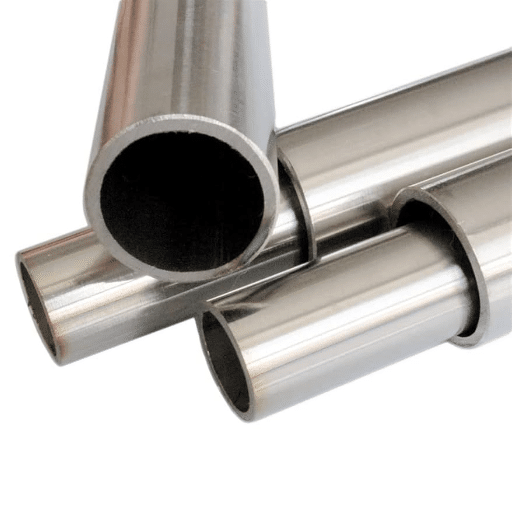
Annealed stainless steel indeed presents multiple major advantages that are making it quite unavoidable in many different industries. Above all, the annealing committed process greatly increase the ductility and the malleability of the material which in turn makes it easier to work with during the fabrication stage. This flexibility that is improved is particularly helpful in the cases where the products have to take very delicate shapes or have to be difficult to form in a certain way. On top of this, annealed stainless steel offers great resistance to corrosion, so the components placed in these harsh environments like marine or chemical industries will last longer. Besides, the material possesses high mechanical properties that include toughness, less brittleness and so on, thus it can perform under high-stress conditions without cracking or breaking. It does have good wear resistance and excellent thermal stability which also qualify it as the right option for high-temperature applications. Together with its recycling and sustainability, annealed stainless steel is in line with the modern objective of reducing the environmental footprint while at the same time maintaining the highest performance standards.
Improved Workability and Formability
Annealed stainless steel is an amazing material with great workability and formability, and therefore it is the most used metal in many industries. The annealing process has the effect of softening the metal, which in turn makes the metal able to be drawn out quite a lot without the risk of breaking or damaging it at all; thus, the production of very intricate geometric shapes is easy and without any time-consuming stages. As per the most recent information coming from the Google search engine, the main reason for the flexibility increase in annealed stainless steel was that the material became easily accessible in such varied fields as the automotive industry for parts and tools, the architectural profession for designs and decorations, and the medical industry for high-precision instruments. The advantages of this material, besides its being easy to work with, are that it can even perform excellently in harsh conditions, thus helping the industry to maintain a balance between the two objectives of innovation and sustainability.
Stress Relieving and Hardness Reduction
The processes of relieving stress and lowering hardness are very important in the field of material engineering as they can lead to better performance and longer lifespan. Stress relieving is done by heating the material to a certain temperature just below its melting point and then cooling it down very slowly. This treatment eliminates the internal stresses that come from previous operations like welding or cutting, thus making the material more stable in size and shape. However, hardness reduction which is mostly performed by means of annealing has the opposite effect of making the material softer without losing its original quality. It can be used to make a tool that has become too hard or brittle for its expected purpose more workable and, therefore, less prone to breakage risks.
The most recent statistics obtained from Google’s search engine indicate that stress relieving treatment is mostly employed in manufacturing metal parts in the automotive and building sectors, thereby providing both strength and ease of movement. The methods of hardness reduction are especially preferred in the production of precision measuring and cutting tools where even minute alterations will require skillful handling. All these processes will ensure that the final product maintains the right ratio of strength and ductility thus making it suitable for many industrial applications.
Enhanced Corrosion Resistance
Corrosion resistance is a vital factor in the prolongation of the lifespan and reliability of metal parts, especially in moistened, chemical, or extreme temperature environments. Material science has been continuously feeding new techniques like galvanization, electroplating, and the application of special coatings to fight corrosion more efficiently. The recent data indexed on Google’s search engine shows that these advancements not only lower maintenance costs but also enhance sustainability by reducing material degradation over time. The introduction of improved corrosion resistance into the production of materials guarantees that the materials do not lose their strength and thus are fit for sectors such as automotive, construction, and aerospace.
Types of Annealed Stainless Steel
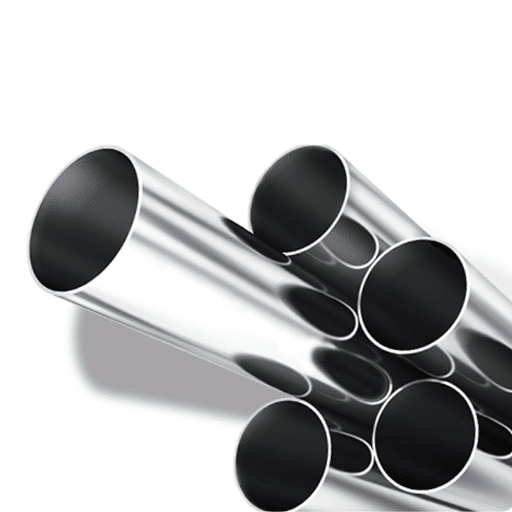
Austenitic Stainless Steel
The austenitic group includes grades 304 and 316, which are the most recognized ones among all for being very resistant to corrosion, highly ductile, and easy to weld. These characteristics of the materials make them suitable for chemical processing, food-grade applications, and marine environments.
Ferritic Stainless Steel
The ferritic types are characterized by grades such as 430 and 439 with their magnetic properties, resistance to stress corrosion cracking, and lower nickel content. These steels are generally used in the automotive field and for decorative trimmings because they are both cost-effective and efficient.
Martensitic Stainless Steel
Martensitic kinds like 410 and 420 are very strong and hard but at the same time have moderate resistance to corrosion. They are used in the cutting tools, surgical instruments, and industrial blades where the durability of the product is a must.
Duplex Stainless Steel
By taking advantage of these two properties—toughness of austenitic and ferritic steels—duplex stainless steels have become very strong and at the same time very resistant to corrosion. They are the perfect materials for the oil and gas industry as well as heavy-duty structural components.
Precipitation Hardening (PH) Stainless Steel
17-4 PH is one of the grades especially developed for high strength, durability, and corrosion resistance. These materials are very versatile; the aerospace, nuclear, and energy sectors are among the main users.
316 Annealed Stainless Steel
316 annealed stainless steel is an austenitic stainless steel that exhibits exceptional corrosion resistance, particularly when it comes to chloride environments. Thus, it is suitable for both marine and chemical processing applications. The annealing process makes the metal more ductile and reduces its internal stress, so it can still have great mechanical properties and resistance. Typical uses of this material are in surgical instruments, valves, and heat exchangers, to name a few, where strength and corrosion resistance are both very important.
430 Annealed Stainless Steel
Stainless steel 430 has a reputation of being one of the most affordable and useful materials, especially in applications with moderate corrosion resistance. 430 stainless, in contrast to higher-cost grades, has less nickel, which makes it more economical while still providing essential non-corrosive properties. The annealing process gives rise to much better formability and ductility, which allows this steel to be used in a wide range of applications like automotive trim, kitchenware, and ornaments. Also, its ferritic structure grants it good resistance to both oxidation and thermal fatigue, thus it is usually found in mild acidic or alkaline environments. Thanks to its combination of performance and cost, 430 annealed stainless steel is still a favorite in many sectors.
Bright Annealed vs. Standard Annealed
Bright annealed stainless steel and standard annealed stainless steel differ mainly in surface treatments and the atmosphere control that is used throughout the annealing process. Bright annealed stainless steel is subjected to a heat treatment in a controlled, inert atmosphere that prevents oxidation, and this results in a surface that is highly reflective and like a mirror. Such a finish is very much liked in places where aesthetics are quite important and it is used in the making of appliances, architectural features, and decorative trim.
In contrast, standard annealed stainless steel has a surface finish that is usually duller and more matte because while the annealing process is taking place, the metal is being exposed to air and this also causes a very thin layer of oxidation to form. The standard finish may not be as attractive as the bright finish but it is still a good mechanical performer and is also cheaper for use in applications like structural parts or industrial equipment where the aesthetic is not important.
When it comes to choosing between these two types of steels, the decision will be mainly based on the application requirements. In case surface appearance and cleanliness are the top priorities, then bright annealed stainless steel will be the best choice. On the other hand, if you are looking for a general-purpose application where cost and functionality are more important than appearance, then standard annealed stainless steel will be the more suitable option.
Applications of Annealed Stainless Steel
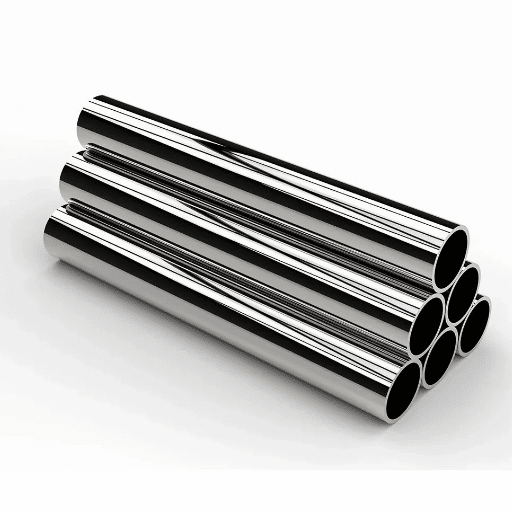
Automotive Industry
The durable and high-temperature resistant and corrosion-resistant properties of stainless steel made it a suitable material for use in exhaust systems, structural components, and decorative trims.
Food and Beverage Industry
The material is of utmost importance in the kitchen equipment, storage tanks, and processing machinery manufacturing, as it cleans easily, is hygienic, and does not get damaged by food acids and cleaning agents.
Construction and Architecture
Annealed stainless steel is the best choice in the above situation since it is extreme environmental conditions-proof, the ideal mix of strength and aesthetic appeal, and long-lasting.
Medical Equipment
The surgical instruments and other devices used in hospitals are made from stainless steel wire and the reason for choosing this material is its biocompatibility, easy cleaning, and wear and corrosion resistance.
Chemical Processing Industry
The components made of annealed steel can handle corrosive chemicals and intense pressures. Thus, annealed steel is often chosen for pipes, valves, heat exchangers, and reactor vessels in chemical plants.
Use in Construction and Architecture
Annealed steel, due to its superior plasticity and vigor, becomes a very important material in the construction and architectural projects. Its capacity for easy shaping and welding makes it an ideal candidate for structural parts like beams, columns, and reinforcing bars, thereby making it the most popular choice among constructors. Not only that, but the architects also make frequent use of Annealed steel when it comes to designing the appearance of the buildings in the form of metal skeletons, coverings, and decorative patterns because of its adaptability and durability even to wear and environmental factors. Besides, the recent search trends reflect a rising concern for the sustainability issue surrounding the use of annealed steel which, being highly recyclable, is in line with the modern green building practices. This information corroborates the material’s presence in the world’s architecture that is durability and eco-consciousness focused.
Applications in the Food and Beverage Industry
- Processing Equipment: The use of annealed steel in the production of mixers, blenders, and tanks has become common place. The application of this steel in these production has the effect of non-reacting, thus keeping the food and beverages untainted throughout their making process.
- Storage Tanks: The annealed steel that is considered food-grade is the only one used in the making of tanks for the storage of beverages, oils, and different liquids. The reason why this material is so widely used is that it is very durable and its resistance to oxidation helps in keeping the quality of the goods being stored much longer.
- Conveyor Systems: Annealed steel parts are often found in conveyor belts and systems used in food production houses. This guarantees that the product goes through the process smoothly while the hygiene is kept up and the operations do not contribute much to the wear and tear.
- Kitchen Appliances: Ovens, grills, and fryers used in the large-scale industrial kitchen have been made using annealed steel due to its ability to withstand high temperatures and ease of cleaning which are required by the strict health and safety regulations.
- Packaging Tools and Machines: Annealed steel requirements are such that they are very important in the production of the tools and machinery for food packaging, which is characterized by needing precision and durability and ensuring that food products are effectively sealed and protected.
Role in Medical Equipment Manufacturing
The manufacturing of medical devices largely depends on the use of annealed steel because of its exceptional characteristics, which include enhanced ductility, toughness, and wear resistance. These properties not only make it suitable for the production of such devices but also facilitate the manufacture of precision instruments like implants, surgical tools, and diagnostic devices where reliability and accuracy of the material are of utmost importance. Recent statistics show that annealed steel is very much in demand in the medical sector, especially in the production of surgical-grade stainless steel that has to comply with very high hygiene and corrosion resistance standards. The collaboration between the material scientists’ breakthroughs and the meticulous manufacturing processes results in annealed steel being certified for safe use in medical environments.
References
-
High-Temperature Characteristics of Stainless Steel – Stanford University
A detailed study on the properties of various steels, including annealed conditions, under high temperatures.
Visit the site -
Temperature Effects on Mechanical Properties of Annealed Stainless Steel – University of North Texas
Research on the tensile properties of annealed 304L stainless steel under varying temperatures.
Visit the site -
Stainless Steel Grade Chart – Stanford University
A comprehensive chart detailing the corrosion resistance and performance of stainless steel in annealed conditions.
Visit the site
Frequently Asked Questions (FAQ)
What is the annealing process for stainless steel?
The annealing process for stainless steel is done by heating the material at a certain temperature, usually above the critical temperature, and then cooling it down at a controlled rate. This treatment is then used to relieve internal stresses, increase ductility, and lower hardness, and thus, the resultant material will be stainless steel that is easier to work with.
How does annealing influence the hardness of stainless steel?
The hardness of stainless steel is diminished through annealing when the microstructure is stabilized. The austenite phase is reached during the heating stage, and then the hardness gradually decreases by the refinement of grain boundaries and decrease of dislocations within the crystal structure.
What are the distinctions between 316 stainless steel and 430 stainless steel regarding annealing?
316 stainless steel is austenitic and thus demands a higher annealing temperature than 430 stainless steel, which is ferritic. The annealing treatment of 316 stainless steel not only increases its corrosion resistance but also improves its mechanical properties, while the 430 stainless steel is less hard and more resistant to fatigue as a result of the annealing process.
What is solution annealing in up today’s stainless steel?
Solution annealing is a heat treatment process, which involves heating the stainless steels to a temperature where carbides dissolve into the matrix, and then followed by rapid cooling. This process enhances the corrosion resistance and promotes a uniform grain structure, which allows the material to be used in high-strength applications combined with excellent corrosion resistance.
How does the cooling rate affect the properties of annealed stainless steel?
The cooling rate has a major effect on the hardness and microstructure of annealed stainless steel. Slow cooling will give rise to a more uniform microstructure but, if the cooling is fast, the material may become harder and possibly more brittle depending on the exact alloy and its composition.
Can stainless steel that has been annealed be welded?
Absolutely, annealed stainless steel can be welded. The annealing cycle increases the ductility of the material and lowers the likelihood of cracking during the welding process, which is a common problem with stainless steels. Nevertheless, it is crucial to control the heat input in welding operations to prevent changes in the material properties and to preserve its resistance to corrosion.
What is the role of tempering in the heat treatment of stainless steel?
Tempering is an integral part of stainless steel heat treatment, especially for martensitic stainless steels. This process entails reheating the material to a lower temperature post-hardening, which in turn helps to get rid of stresses, enhance toughness, and achieve a desirable mix of strength and hardness, thus making it suitable for a variety of applications.
What is the function of low-carbon content in the case of annealed stainless steel?
In the case of annealed stainless steel, the low-carbon content improves its weldability and lowers the chances of intergranular corrosion occurring. During annealing, low-carbon stainless steels are able to maintain a good compromise between strength and ductility, and thus, the material becomes easier to form and process during production.
What is the effect of the annealing temperature on stainless steel properties?
The annealing temperature is a very important factor in deciding the mechanical properties of the stainless steel. The hotter the annealing, the more the softening and the better the ductility; whereas, lower temperatures may not be effective in relieving internal stresses sufficiently, thus resulting in a less malleable and more brittle material.

